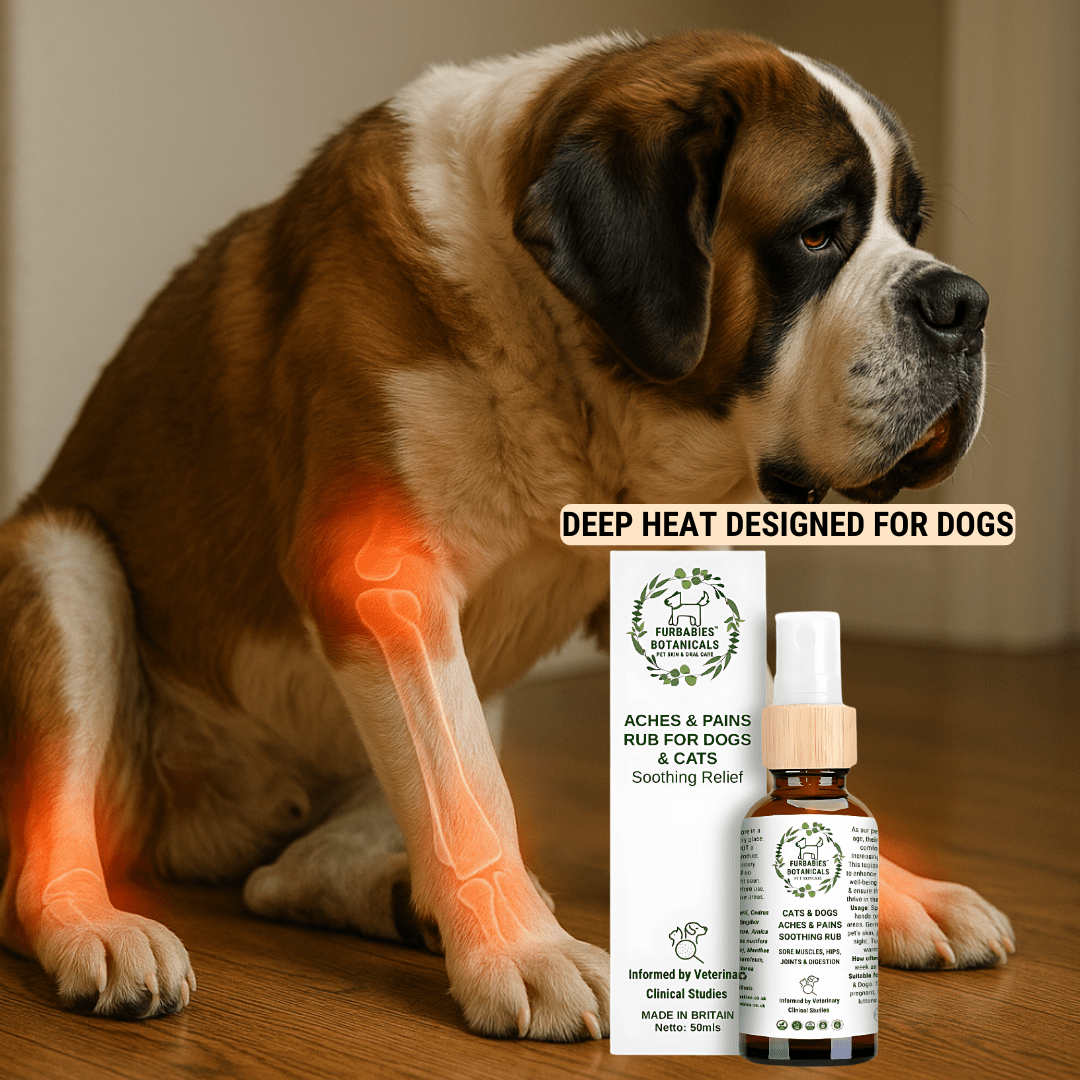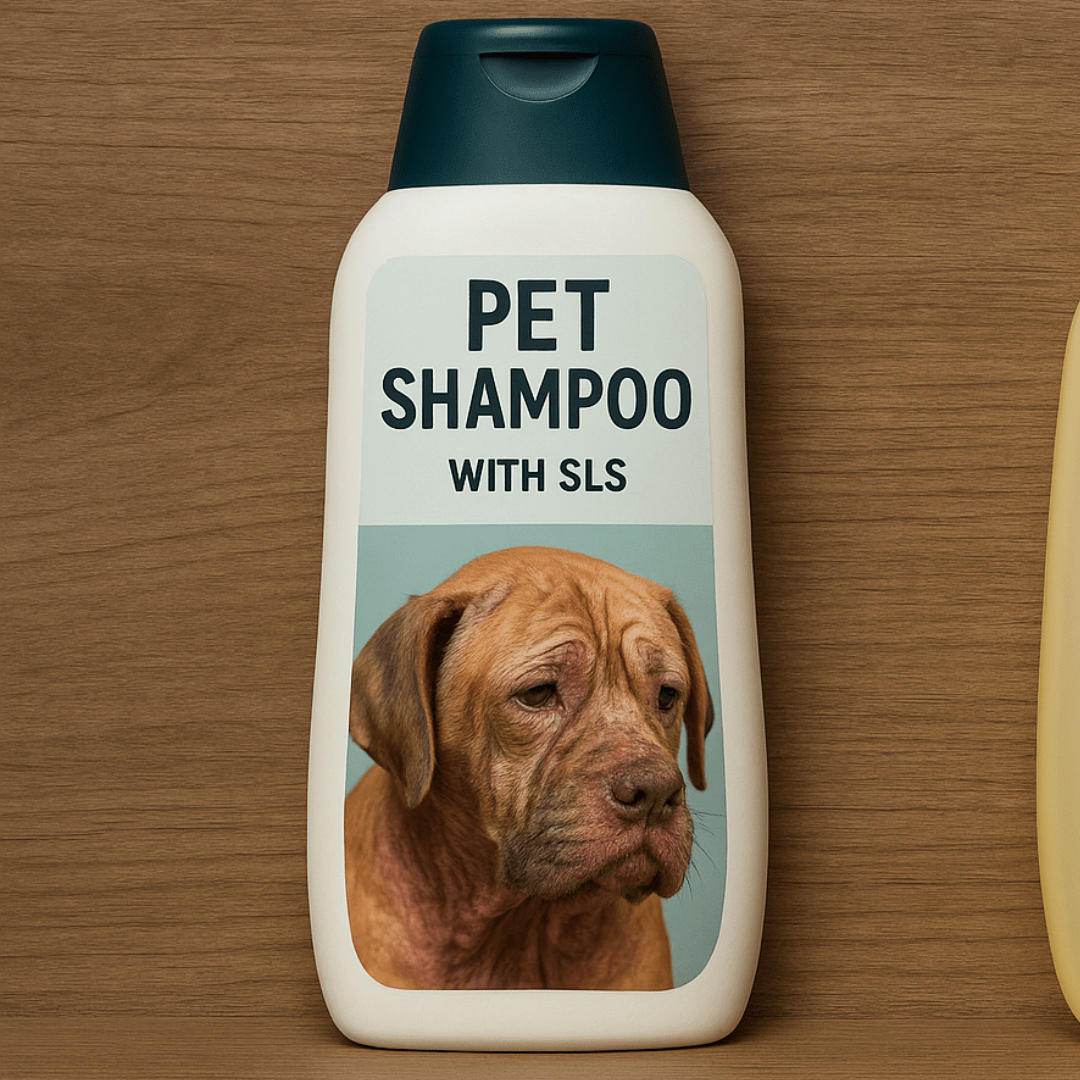✅ No toxic ingredients found in human products
✅ Targets multiple layers of discomfort simultaneously
✅ Works in 10-30 minutes for fast-acting relief
Table of Contents
- Understanding Topical Pain Relief for Dogs
- Why Deep Heat and Human Products Are Dangerous for Dogs
- Safe Topical Pain Relief Options for Dogs
- How Topical Pain Relief Works in Dogs
- Topical vs Oral Pain Medications: What's Best for Your Dog
- Key Ingredients to Look For (and Avoid)
- Application Techniques and Best Practices
- When to Use Topical Pain Relief vs Other Treatments
- Veterinarian-Recommended Topical Solutions
- Frequently Asked Questions
Understanding Topical Pain Relief for Dogs
When your beloved dog is struggling with joint discomfort, muscle stiffness, or arthritis pain, finding safe and effective relief becomes a top priority. Topical pain relief for dogs offers a targeted approach that can provide comfort without the systemic risks associated with oral medications.
Unlike oral pain medications that must be processed through your dog's liver and kidneys, topical applications work directly at the site of discomfort. This localised approach makes topical pain relief an increasingly popular choice among pet owners and veterinarians seeking safer add-ons or alternatives for managing canine discomfort.
What Makes Topical Pain Relief Different?
Topical pain relief products for dogs are specifically formulated to:
- Target specific areas of discomfort without systemic absorption
- Reduce the risk of organ stress common with oral medications
- Provide faster onset of relief at the application site
- Complement existing treatment plans without drug interactions
- Offer a non-invasive alternative to injections or surgery
The growing awareness of pet pain management has led to significant advances in topical formulations designed specifically for canine physiology, making them safer and more effective than ever before.
Why Deep Heat and Human Products Are Dangerous for Dogs
Toxic Ingredients in Human Deep Heat Products
Many popular human deep heat rubs contain ingredients that are toxic to dogs:
Methyl Salicylate (Wintergreen Oil)
- Highly toxic to dogs even in small amounts
- Can cause severe poisoning, organ failure, and death
- Absorbs rapidly through canine skin
Menthol and Camphor
- Can cause skin irritation and chemical burns
- May lead to respiratory distress in dogs
- Toxic if licked off during grooming
Capsaicin (from Hot Peppers)
- Causes severe burning and irritation
- Can damage sensitive canine skin
- Extremely painful if dogs lick the area
Why Dogs Are More Vulnerable
Dogs process medications differently than humans due to:
- Thinner skin that absorbs topical products more readily
- Different metabolism that cannot safely process many human medications
- Grooming behavior that leads to ingestion of topical products
- Smaller body size making toxic doses easier to reach
Real Consequences of Using Human Products
Veterinary emergency rooms regularly treat dogs poisoned by human topical pain relievers. Symptoms include:
- Vomiting and diarrhea
- Difficulty breathing
- Seizures
- Organ failure
- In severe cases, death
Safe Topical Pain Relief Options for Dogs
Fortunately, there are several safe and effective topical pain relief options specifically designed for dogs. These products are formulated with canine physiology in mind and undergo rigorous safety testing.
Integrative Research Informed Topical Rubs
The gold standard in canine topical pain relief comes from products supported by reserach & those used by integrative vets using species-specific research. These formulations typically include:
Botanical-Based Ingredients
- Arnica montana for inflammation reduction
- Boswellia for joint support
What Makes a Topical Product Safe for Dogs?
• pH balanced for canine skin
• Concentration levels appropriate for dogs
• No toxic ingredients commonly found in human products
Veterinary Testing and Approval
- Clinical trials conducted on dogs
- Safety data specific to canine use
- Veterinarian oversight in development
How Topical Pain Relief Works in Dogs
Understanding how topical pain relief works helps explain why it's often more effective and safer than oral alternatives for many dogs.
The Science Behind Topical Application
Localised Delivery
When applied to the skin, topical pain relief products work through several mechanisms:
- Direct penetration to underlying tissues
- Activation of skin receptors that block pain signals
- Improved blood circulation in the treated area
- Reduction of local inflammation
Topical applications often work through the "gate control theory" of pain: Topical ingredients stimulate large nerve fibers in the skin, which "close the gate" to pain signals from smaller fibers, resulting in reduced discomfort.
Targeting Multiple Layers of Discomfort
Quality topical pain relief products address different sources of discomfort:
Muscle Tension
- Warming ingredients relax tight muscles
- Improved circulation reduces muscle spasms
- Enhanced flexibility and range of motion
Nerve Sensitivity
- Cooling agents calm overactive nerves
- Natural compounds reduce nerve inflammation
- Decreased hypersensitivity to touch and movement
Poor Circulation
- Vasodilating ingredients increase blood flow
- Better oxygen and nutrient delivery to tissues
- Faster removal of inflammatory waste products
Guarded Posture
- Pain relief allows natural movement patterns
- Reduced compensation behaviors
- Improved overall mobility and comfort
Advantages Over Systemic Medications
| Benefit | Topical Relief | Oral Medications |
|---|---|---|
| Targeted Action | ✓ Direct application | ✗ Whole body exposure |
| Organ Safety | ✓ Minimal systemic absorption | ⚠ Liver/kidney processing |
| Speed of Relief | ✓ 10-30 minutes | ⚠ 30-60 minutes |
| Side Effects | ✓ Minimal risk | ⚠ Potential organ stress |
The Complementary Approach
Key Ingredients to Look For (and Avoid)
Understanding the ingredients in topical pain relief products helps you choose the safest and most effective options for your dog.
Safe and Effective Ingredients
Arnica Montana
- Natural anti-inflammatory properties
- Reduces swelling and bruising
- Promotes healing of soft tissues
- Well-tolerated by most dogs
Boswellia Serrata
- Traditional anti-inflammatory herb
- Supports joint mobility
- Reduces pain and stiffness
- Clinically studied for arthritis
Cedarwood
- Natural calming and soothing properties
- Helps reduce muscle tension and stress
- Anti-inflammatory benefits for joint discomfort
- Safe for topical canine application when properly diluted
Clary Sage
- Natural muscle relaxant properties
- Helps reduce inflammation and pain
- Promotes circulation to affected areas
- Gentle and well-tolerated by dogs
Gingerol (from Ginger)
- Powerful anti-inflammatory compound
- Natural pain-relieving properties
- Improves circulation and reduces stiffness
- Clinically proven for joint health support
Peppermint (Veterinary-Safe Concentration)
- Cooling sensation for immediate comfort
- Natural analgesic properties
- Helps improve blood flow to treated areas
- Formulated at safe levels for canine skin
Ingredients to Avoid
High Concentrations of Camphor
- Can cause skin irritation
- Toxic if ingested
- May cause respiratory issues
- Avoid products with >2% camphor
Essential Oils at Human Concentrations
- Tea tree oil (toxic to dogs at any concentration)
- Eucalyptus (can be irritating in high concentrations)
- Peppermint (unsafe at human product concentrations)
- Always verify veterinary-safe concentration levels
Red Flags:
- "For human and animal use" (not species-specific)
- Vague ingredient descriptions
- No concentration information
- Missing safety warnings
- No veterinary involvement in development
Application Techniques and Best Practices
Proper application of topical pain relief products is crucial for both safety and effectiveness. Follow these veterinarian-recommended techniques for best results.
Step-by-Step Application Process
1. Preparation
- Wash your hands thoroughly
- Ensure the application area is clean and dry
- Have your dog in a comfortable, secure position
- Keep the product away from your dog's face and mouth
2. Application Technique
- Use a small amount initially (pea-sized for most areas)
- Apply to the skin, not just the fur
- Gently massage in circular motions
- Work the product into the skin until absorbed
- Avoid over-application
3. Post-Application Care
- Wash your hands immediately after application
- Prevent your dog from licking the area for 10-15 minutes
- Monitor for any adverse reactions
- Keep the product stored safely away from pets
Application Areas and Techniques
Joint Applications (Hips, Knees, Elbows)
- Part the fur to expose skin
- Apply directly over the joint
- Massage gently in circular motions
- Cover a 2-3 inch area around the joint
Muscle Applications (Back, Shoulders, Thighs)
- Use slightly more product for larger muscle groups
- Apply in long, gentle strokes following muscle direction
- Focus on areas of visible tension or sensitivity
- Avoid bony prominences
• Start with once daily application
• Apply at the same time each day for consistency
• Most products are effective for 8-12 hours
• Adjust frequency based on your dog's response
When to Use Topical Pain Relief vs Other Treatments
Understanding when topical pain relief is most appropriate helps ensure your dog gets the best possible care for their specific situation.
Ideal Situations for Topical Pain Relief
Localised Discomfort
- Single joint arthritis (hip, knee, elbow)
- Muscle strains from exercise or activity
- Post-surgical site discomfort (with veterinary approval)
- Specific areas of stiffness or tension
Chronic Conditions
- Mild to moderate arthritis
- Age-related joint stiffness
- Chronic muscle tension
- Long-term mobility issues
As Complementary Therapy
- Alongside oral medications for enhanced relief
- With physical therapy and exercise programs
- Combined with joint supplements
- Part of a comprehensive pain management plan
When to Consider Other Treatments
Severe Pain
- Acute injuries requiring immediate intervention
- Post-surgical pain management
- Severe arthritis with significant mobility loss
- Pain that doesn't respond to topical treatment
Veterinarian-Recommended Topical Solutions
When choosing a topical pain relief product for your dog, clinical backing make a significant difference in both safety and effectiveness.
What Veterinarians Look For
Clinical Evidence
- Studies conducted specifically on dogs
- Peer-reviewed research supporting efficacy
- Safety data from veterinary trials
- Long-term use studies
Formulation Quality
- Species-appropriate ingredient concentrations
- pH balanced for canine skin
- Stable, consistent formulations
- Appropriate preservative systems
Integration with Veterinary Care
Professional Guidance
- Proper diagnosis of your dog's condition
- Appropriate treatment recommendations
- Monitoring for effectiveness and safety
- Adjustments based on response
Frequently Asked Questions
1. Can I use human deep heat products on my dog?
2. Is topical pain relief safe for senior dogs?
3. Can I use topical pain relief with my dog's current medications?
4. How often can I apply topical pain relief to my dog?
5. What should I do if my dog licks the topical product?
6. Can topical pain relief help with my dog's arthritis?
7. How do I know if the topical pain relief is working?
- Increased willingness to move or exercise
- Less stiffness when getting up
- Improved gait or walking pattern
- More relaxed posture
- Increased interest in activities
- Better sleep quality
- Reduced signs of discomfort when touched
Conclusion
Topical pain relief for dogs represents a safe, effective alternative to oral medications for many canine comfort issues. By choosing veterinarian-formulated products specifically designed for dogs, you can provide targeted relief without the systemic risks associated with oral pain medications.
Help Your Dog Feel Better Today
Our veterinarian-formulated topical rub provides safe, effective relief for your dog's discomfort. Targeting muscle tension, nerve sensitivity, and poor circulation - the layers of discomfort that oral medications often miss.
Try Risk-Free - 30-Day GuaranteeRemember: While topical pain relief can significantly improve your dog's comfort and quality of life, it's always best to work with your veterinarian to develop a comprehensive pain management plan tailored to your dog's specific needs.
Your dog's comfort and safety should always be the top priority. When in doubt, consult with your veterinarian to ensure you're making the best choices for your beloved companion's health and well-being.
This article is for educational purposes only and does not replace professional veterinary advice. Always consult with your veterinarian before starting any new treatment for your dog.













Share:
Cat Overgrooming: Complete Guide to Excessive Licking in Cats
Cat Chin Acne: Complete Guide to Causes, Symptoms & Diagnosis